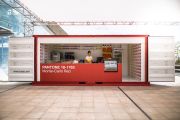
Lendlease, Warburg Pincus in $1.8b life sciences buy
Lendlease and joint venture partner Warburg Pincus have acquired a $S1.6 billion ($1.8 billion) portfolio of life sciences and research facilities in a move that helps Lendlease show investors it is boosting investment in alternative assets.
The joint venture that ASX-listed Lendlease and growth investor Warburg Pincus launched in July acquired the 4.5-million square-foot (418,063 square metre) portfolio from entities associated with Blackstone and property company Soilbuild Group Holdings executive chairman Lim Chap Huat.

“This strategic acquisition underscores our commitment to the rapidly expanding life sciences and R&D real estate market in Asia Pacific.” said Justin Gabbani, Lendlease’s head of investment management.
“The platform is well-positioned to capture opportunities in the sector. We look forward to building momentum and further scaling the business, as well as driving performance for our investment partners.”
Lendlease said it will commit up to $100 million to fund its share of the acquisition.
The company that last week reported a $1.5 billion statutory loss as part of its messy exit from underperforming businesses – a transformation forced upon it by major investors – is building up its international investments business even as it scales back overseas construction and development.
Key part of strategy
The life sciences joint venture – seeded with a workplace asset in Japan’s Yokohama from the former Lendlease Innovation Limited Partnership in which the company held a 15 per cent stake – is a key part of the strategy Lendlease boss Tony Lombardo reinforced last week.
“Our priorities remain strengthening our balance sheet, returning capital to security holders, investing in our high-return Australian operations and growing our international investments platform,” Mr Lombardo said.
But it needs investors to believe it is on the right track. The company’s earnings before interest, taxes, depreciation, and amortisation from investment in FY24 nearly halved from a year earlier to $174 million. Excluding the previous year’s gain from the sale of its military housing business, the decline was 9.8 per cent.
“The material strategy shift to focus back on Australia and to upweight investments is a work in progress, with the retreat from offshore operations likely to drag on through FY25 and FY26,” JP Morgan analyst Richard Jones said last week.
And it faces competition in the once-niche sector of life sciences that is now a key driver of real estate demand.
‘Landmark acquisition’
Last year private equity property player Wentworth Capital struck a deal with the University of Sydney to develop a $500 million hub for life sciences, in one of the biggest single moves for the emerging real estate sector
Acquisition of the portfolio that includes business parks and facilities tenanted to life sciences, technology, advanced manufacturing and logistics, boosts assets under management of Lendlease’s joint venture platform to more than $S2 billion.
“We are delighted to be completing this landmark acquisition shortly after establishing the JV platform,” said Takashi Murata, Warburg Pincus’ managing director and co-head of Asia real estate.
“The portfolio gives us immediate scale in the tightly held Singapore market, cementing our position as one of the top industrial asset owners in Singapore and reiterating our conviction in the life sciences and R&D sector.”











